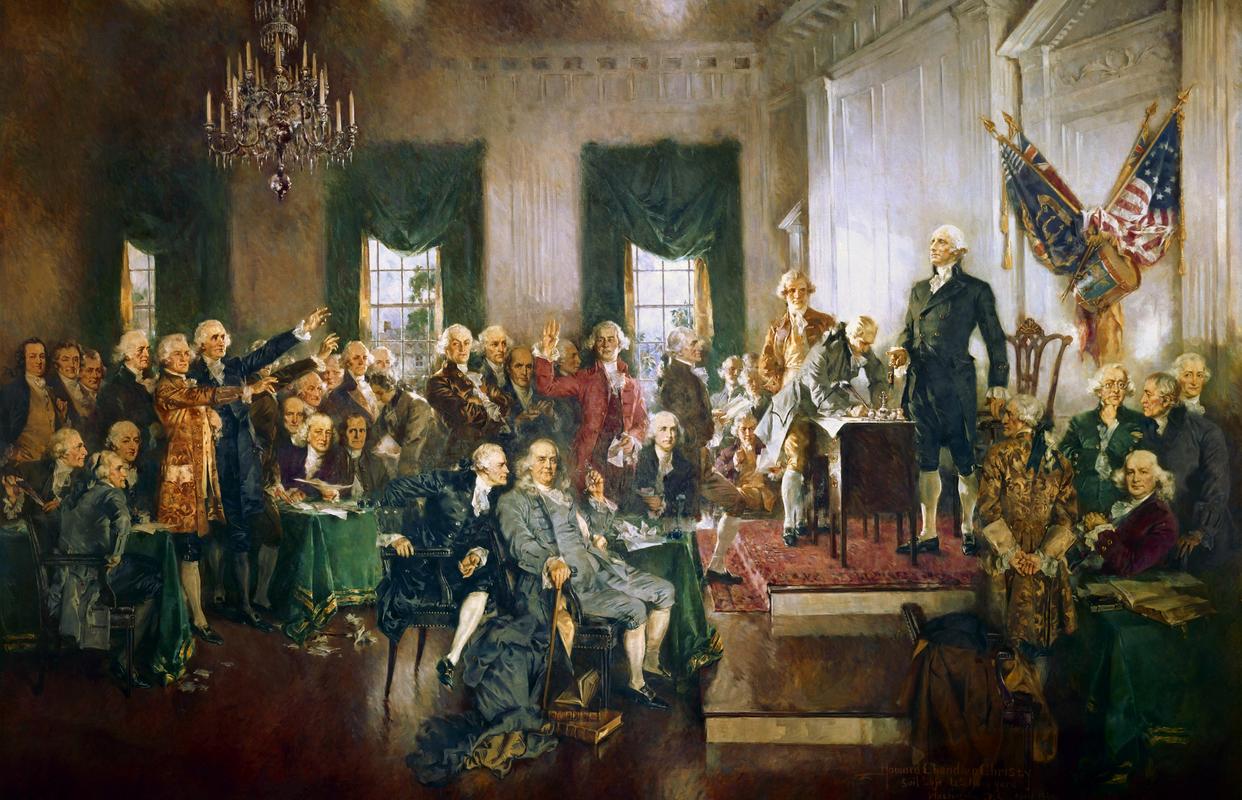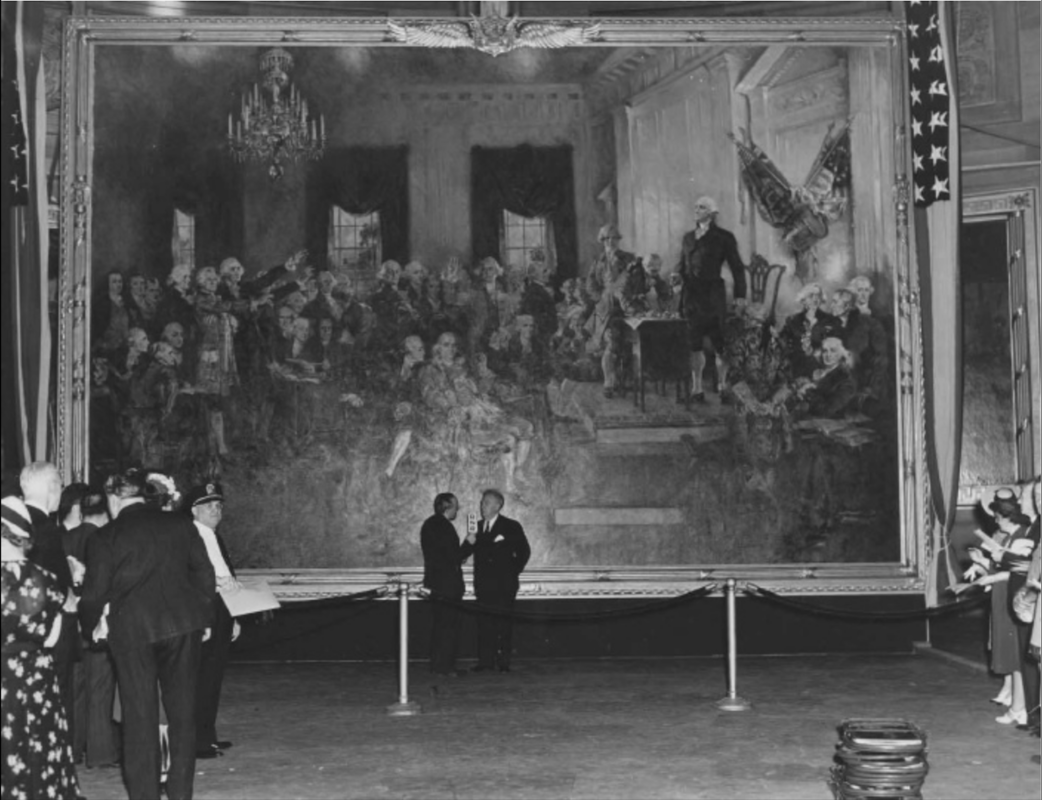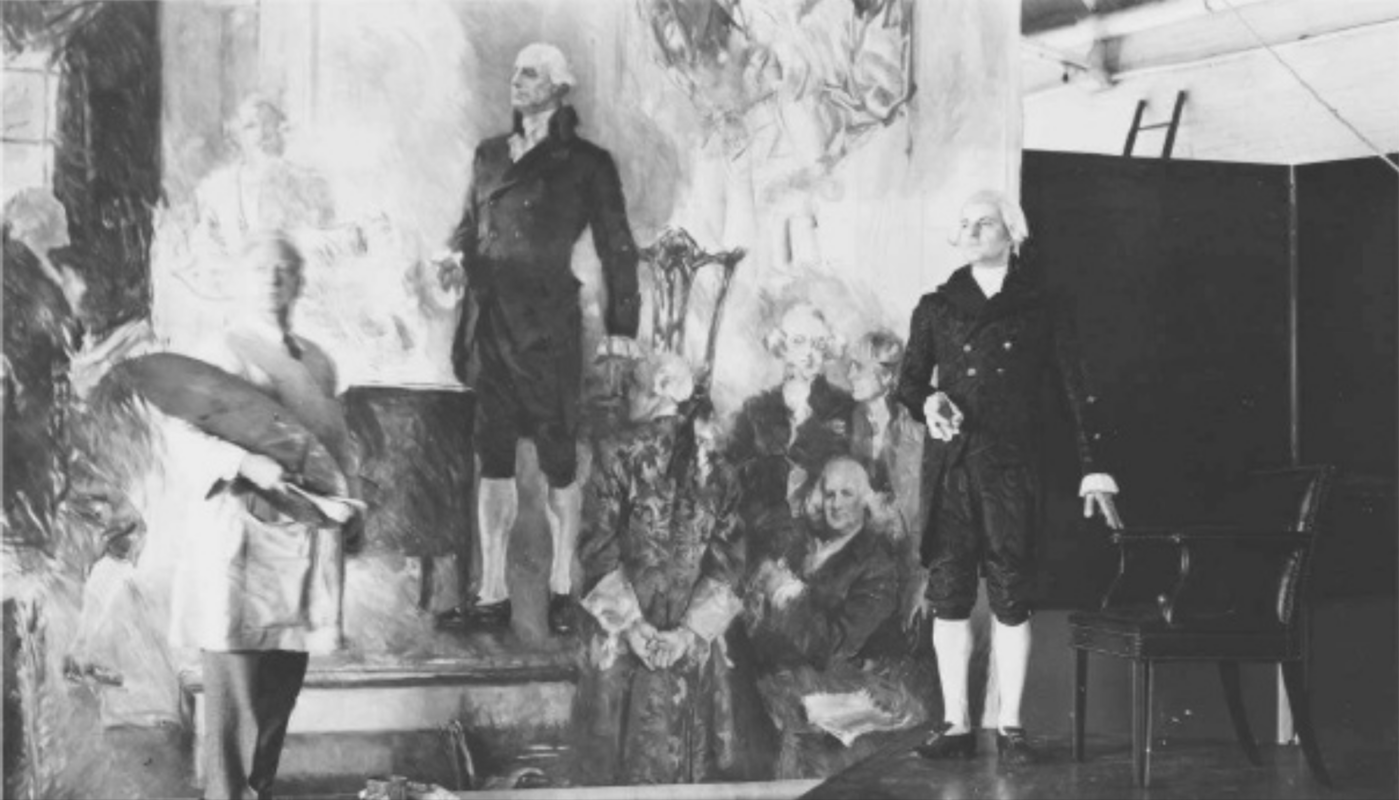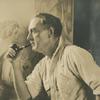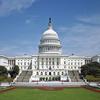More about Signing of the Constitution

Contributor
Scene at the Signing of the Constitution of the United States is, in every sense of the word, enormous.
When the completed painting within its frame was revealed in the U.S. Capitol Building in May of 1940, it stood thirty feet tall and twenty feet wide. The total weight of the canvas and frame came in at approximately 1,700 pounds and had to be created in a Navy shipyard because no studio could accommodate its size. In fact, this painting is so massive that the men found in the foreground stand (or sit) as tall as the models they are based upon, who were, by the way, enlisted members of the Navy.
Also found in this work is a downright ridiculous amount of historical detail save for the addition of one man who signed the Constitution by proxy and the exclusion of three who did not. Each face depicted was recreated from the portraits taken directly from each member of the constitutional convention. The model for George Washington (the super stoic one on the right) wore Washington’s actual breeches which were loaned out by the Smithsonian. The books beneath Benjamin Franklin (found in the center with the kick-ass cane and amazing expression) were exact copies of books found in Thomas Jefferson’s library which were borrowed from the Rare Book Room at the Library of Congress. Even the room was meticulously recreated from sketches Christy made in Independence Hall during the exact month of the signing to imitate the expected amount of light that would have entered the room.
But why did Christy go through three years of trouble to recreate so much detail? Plenty of works on display at the U.S. Capitol Building contain less-than-accurate accounts of historical events. Though Christy had made a name for himself decades prior as a battlefield illustrator, never before had he painted with such obsession to detail based upon pure fact. He had painted this particular event a handful of times before but always embellished fact with symbolism; often including the representations of liberty and freedom mixed with U.S. historical events. The apparent discrepancy can be blamed upon a mix of U.S. domestic politics and Nazis.
In 1937, two years before Christie was commissioned to paint the above piece, New York Representative Sol Bloom had assisted in researching the first version (Signing of the Constitution, 1937) and it included many of Christy’s traditional symbols found in his other patriotic works. When the Congressional Commission was presented with this concept, a majority of representatives could not justify the cost ($35,000) nor did they find the styling of the painting palatable. Though they greatly respected his patriotism, representatives criticized his impressionistic styling and common themes of femininity emphasized in earlier works.
Further, when the commission for The Scene at the Signing of the Constitution of the United States was first considered in 1937, it stood on the heels of the largest depression in human history and at the beginning of its largest war. Though America would not play any formal role in WWII until 1941, U.S. politicians watched the chaos in Europe unfold. Poland had been invaded by the Nazis in 1939 and the rest of the continent, crippled by the Great Depression, was doomed to fall without intervention. U.S. lawmakers felt it necessary for the public to have a clear, fact-based monument to honor American democracy instead of a symbolic gesture towards freedom to fight fascism.
In order to bypass the U.S. House of Representatives and the U.S. Senate blocking Christy, Vice President John Garner along with Speaker of the House William Bankhead and Architect of the Capitol Elliot Woods came up with a cunning plan. They convinced lawmakers to pass a joint resolution to allow for the creation of of the artwork they desired without naming an artist. The three members mentioned above would then be allowed form a separate committee to select an artist. As Garner and Bankhead had both previously commissioned portraits from Christy, their choice was obvious.
Though Christy had finally been awarded the commission in 1939 after two earlier failures, it came with many stipulations. Lawmakers and members of the administration (to satiate members of congress) required all pieces of symbolism be removed and the finished product to be as close as possible to an accurate recreation of the events at the signing of the U.S. Constitution. Nearly a year later, Christy signed the bottom right hand corner of his masterpiece which will remain in the east stairway of the House wing of the U.S. Capitol Building for generations.
Featured Content
Here is what Wikipedia says about Scene at the Signing of the Constitution of the United States
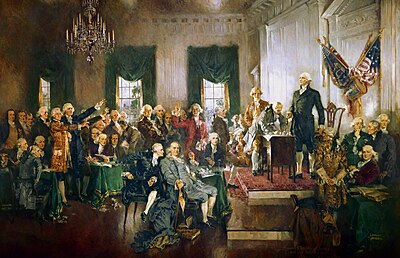
Scene at the Signing of the Constitution of the United States is a 1940 oil-on-canvas painting by Howard Chandler Christy, depicting the Constitutional Convention signing the U.S. Constitution at Independence Hall in Philadelphia on September 17, 1787. Along with Washington Crossing the Delaware by Emanuel Leutze, the painting is one of the most famous depictions of the early days of the United States. Christy created the painting in April 1940; it is so large (20 by 30 feet or 6.1 by 9.1 metres) that he painted it in a sail loft. It currently is displayed along the east stairway in the House of Representatives wing in the Capitol building.
Check out the full Wikipedia article about Scene at the Signing of the Constitution of the United States

